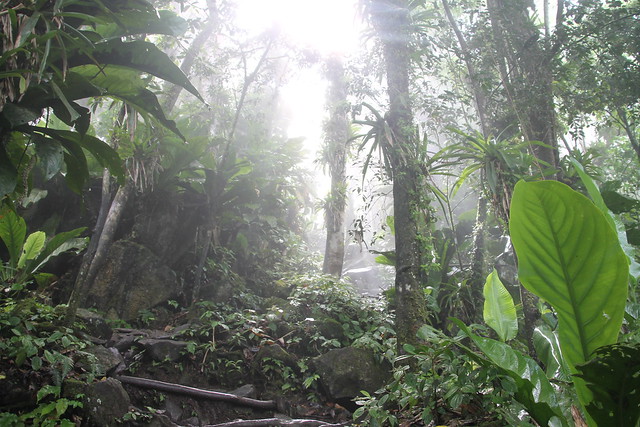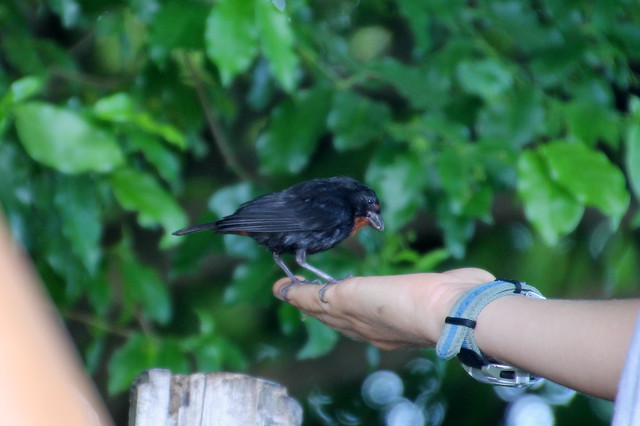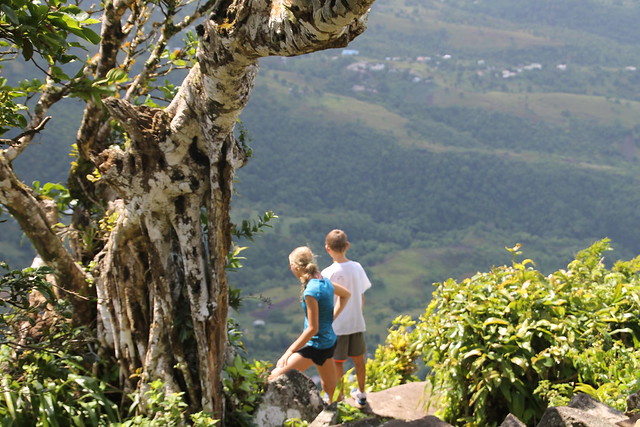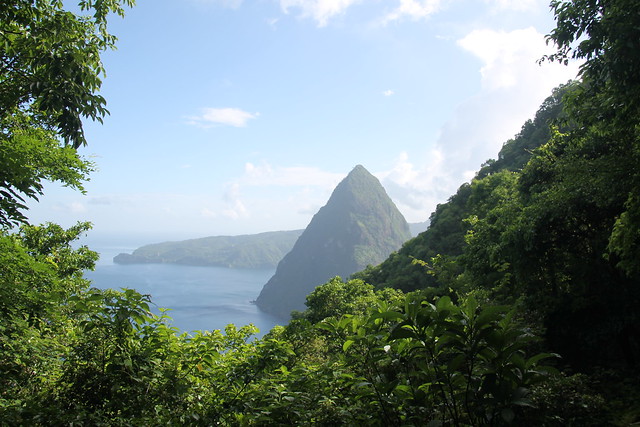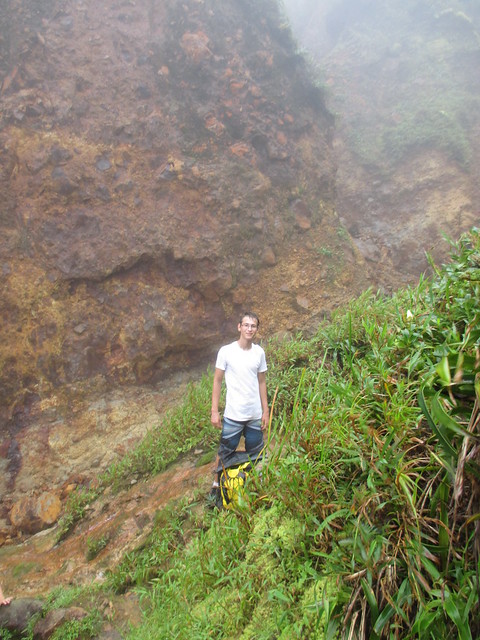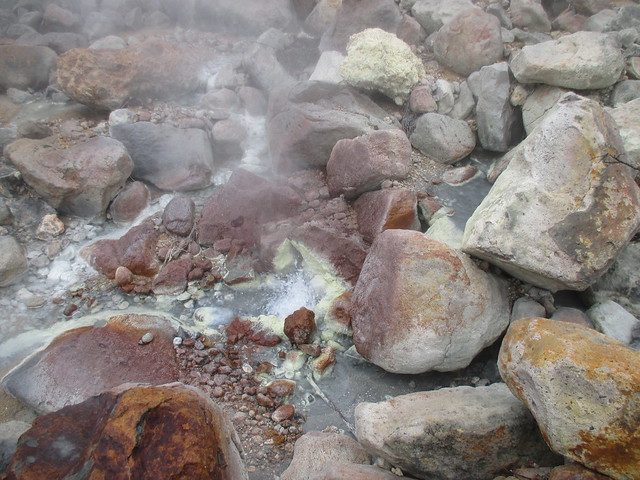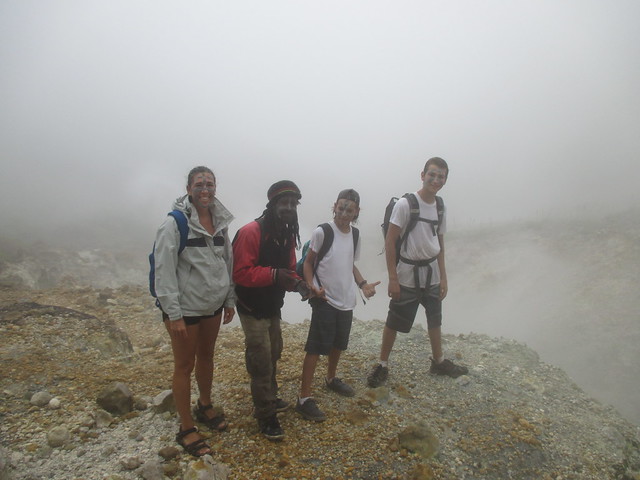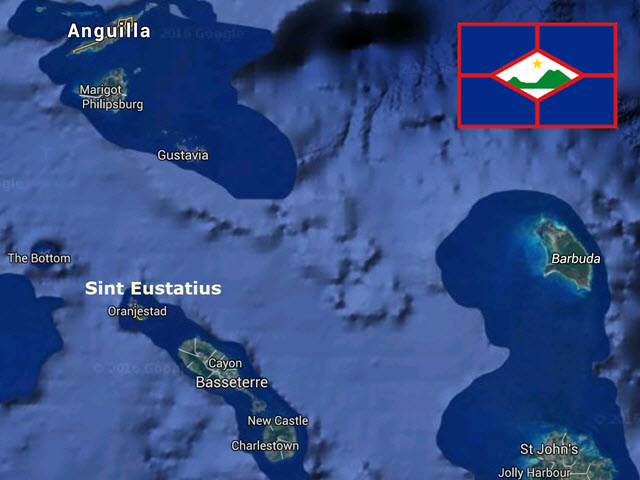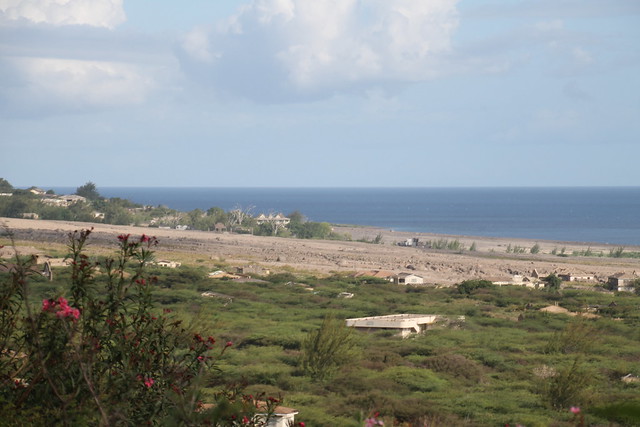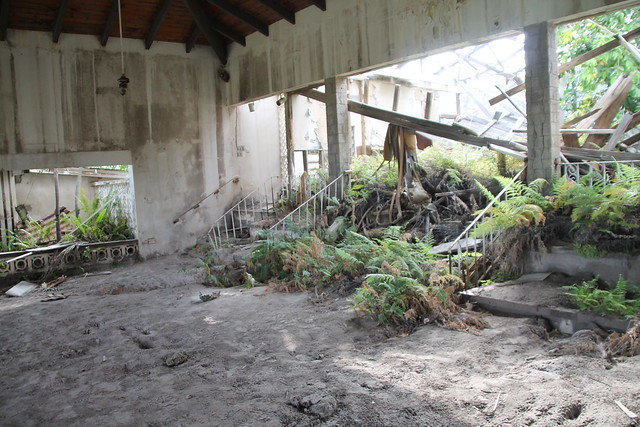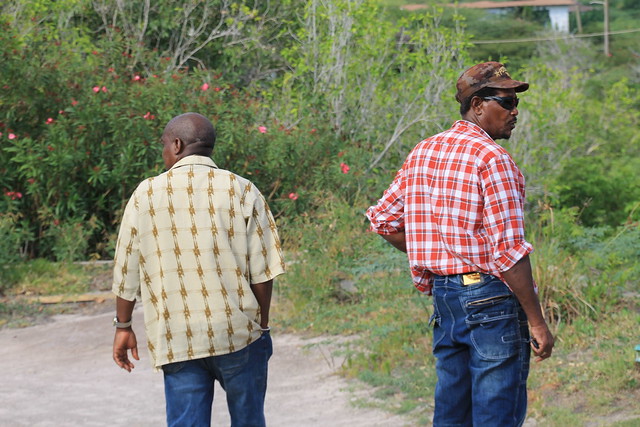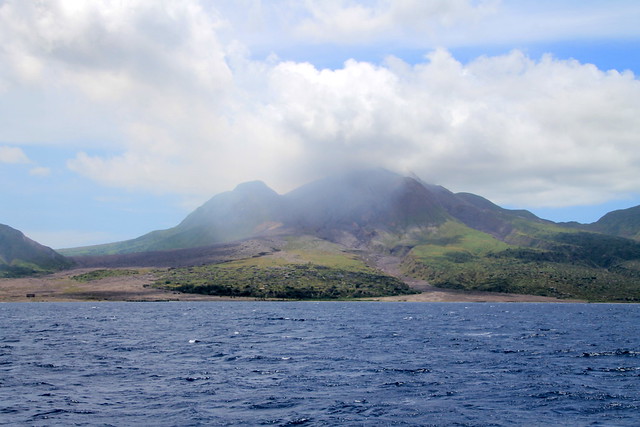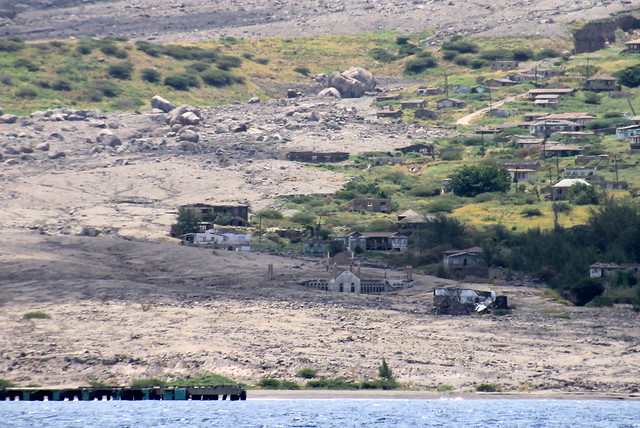Following the wise advice of my friend Kimberly (s/v Ally Cat), I have been keeping a good record of our trip on my calendar. For those who know me, you know this means actually writing with a pencil on a paper calendar in an old-fashioned Day-Timer. The self-same Day-Timer I accidentally dropped overboard about a month ago and had to swim after. I then used a fan and the tropical sun to dry the pages. I can see you shaking your heads right now! But I managed to save it all, including the names and addresses of every person I have ever met, and my entire boat- and business-card collection. So, before any more drowning accidents can occur, I have decided to digitize and save this record for posterity in the Eternal Cloud. You may not care about every day of our voyage, but now that we sit in a safe harbor in St. George’s, Grenada, I’m enjoying a look back at every mile! Somehow, even with all the sailing days and outings, we managed to get some school and work done, too, though, looking at the calendar, I’m not sure how.
March in the Bahamas
3 Take Two leaves Marathon.
4 Sail from Florida Keys to Chub Cay, Berry Islands.
5 Check into the Bahamas at Chub Cay.
6 Sail from Chub Cay to Highbourne Cay, Exumas. Saw 11.5 kts speed using Code Zero.
7 Anchored in Allen’s Cay, picked up internet from Highbourne cell tower for Jay’s work.
8 Leaf Cay Beach Day (with a zillion iguanas).
9 Cold Front, lots of wind. Anchorage rolly.
10 Lunch date and groceries with Jay at Exuma Café in Highbourne Cay Marina.
11 Allen’s Cay, waiting for weather.
12 Allen’s Cay to Norman’s Cay. Beach Fire and S’Mores.
13 Met up with Jeff and Kelly on s/v Tiger Sea. Drinks/snacks on Take Two.
14 Snorkel Wax Cay Cut.
15 Land and Sea Park, Shroud Cay. Kayak to the beach with Rachel and Sarah.
16 Hike on Hawksbill Cay.
17 Hike on Warderick Wells. Met the crew of s/v Abby Singer.
18 Snorkel near Warderick Wells. Giant lobster—protected in Land and Sea Park.
19 Snake Island near Cambridge Cay. Beautiful sunset kayak.
20 Compass Cay. Swam in Rachel’s Bubble Bath, snorkeled Rocky Dundas.
21 Pipe Creek, Thomas and Joe Cays.
22 Pipe Creek, waiting for weather. Eli gets giant lobster.
23 Anchor at Robinson Island, near Sampson Cay.
24 Lunch date with Jay at Staniel Cay Yacht Club and groceries at Isle’s General.
25 Motor-sail to Black Point, Great Guana. Pizza at Lorraine’s with s/v Abby Singer.
26 Laundry and haircut at Ida’s. Swimming with Paige and Sky from Abby Singer.
27 Easter Sunday, Gethsemane Baptist with crew of Abby Singer. Lunch and swim.
28 Easter Monday, beach party with locals from Black Point Settlement.
29 Sail to Little Farmer’s. Drinks at Ty’s Sunset Bar and Grill.
30 Lunch date with Jay at Ocean Cabin and groceries.
31 Rudder Cay. Snorkel with mermaid and piano, and staghorn reef at Musha Cay.
April in Puerto Rico
1 Sail to Georgetown. Sam catches Mahi!
2 Meet up with s/v Ally Cat. Fish tacos on Take Two.
3 Hike up Monument Hill with Andrew and Sky. Rachel on Ally Cat with Kimberly.
4 Beach Fire with s/v Ally Cat and s/v Abby Singer.
5 Mom’s morning out at Exuma Market.
6 Notes on Caribbean, s/v Ally Cat. Music @ St. Francis. Jay’s birthday—burgers & brownies.
7 Set sail for Puerto Rico, pass Rum Cay.
8 Passage to Puerto Rico.
9 Passage to Puerto Rico.
10 Passage to Puerto Rico.
11 Passage to Puerto Rico—rough night, sailing south using cold front.
12 Passage to Puerto Rico—bioluminescence and calm seas.
13 Last day of passage, motoring over calm seas. Anchor near Fajardo.
14 Check in at Palmas del Mar Yacht Club and Customs and Immigration.
15 Mary flies into San Juan for a visit. Rent car and go to COSTCO in Caguas.
16 Hike in El Yunque National Park, swim in La Mina river falls.
17 Casa Bacardi tour, San Juan.
18 Shopping in Caguas.
19 Visit to Old San Juan with Mary, El Morro fort and tram tour. Lunch at Barrachina.
20 Rio Camuy Cave Park tour. Drive over Cordillera Central.
21 Mary flies out of San Juan. Lunch date with Jay at El Pescadero.
22 COSTCO (again).
23 Pool day at the Yacht Club.
24 Palmas del Mar. Catch up on school and work.
25 Palmas del Mar. Laundry day.
26 Palmas del Mar. Dinner with s/v Renewal.
27 Palmas del Mar. Date night with Jay at Italian Café.
28 Palmas del Mar. Catch up on school and work.
29 Palmas del Mar. Rain.
30 Palmas del Mar. Rain. Met Lara and Jaime, engineer at Arecibo.
31 Palmas del Mar. Rain.
May in the Virgin Islands
1 Palmas del Mar. Rain.
2 Rachel’s birthday. Cake with crew of s/v Dingo d’Isles.
3 Sarah’s birthday. Date with just Sarah at the Italian Café.
4 Rent a car to drive to Fajardo to meet up with girls from Abby Singer & Renewal.
5 Left Palmas del Mar. Motor upwind to Vieques. Kayak in Bio-Bay after sunset.
6 Sail to St. Thomas. Anchor near Charlotte Amalie.
7 Sail to St. John. Hawksnest Bay.
8 Hawksnest Bay, St. John.
9 Beach day with s/v Abby Singer at Hawksnest Bay. Dinner on Take Two.
10 Sail to Jost Van Dyke. Check in to BVI.
11 Met up with Ralph and Kathy from s/v Simplicity.
12 Little Jost Van Dyke, Bubbly Pool and Sandy Spit.
13 Cane Garden Bay, Tortola. Painkillers at Tony’s Welcome Bar and ice cream for kids.
14 Sail to Privateer Bay, Norman Island. Kayak, snorkel caves.
15 Norman Island. Snorkel at the Indians. Dinner with s/v Abby Singer on Take Two.
16 Great Harbor, Peter Island. Deep anchorage—used 150 ft. of chain + 100 ft. of rode.
17 Road Harbor, Tortola. Groceries, Digicel, and talk to Doyle Sailmakers.
18 Sail to Little Harbor, Peter Island. Wake boarding.
19 Jib to Doyle for repairs. Motor to Salt Island.
20 Hike on Salt Island. Snorkel wreck of the RMS Rhone w s/v Abby Singer.
21 Motor to Virgin Gorda. Anchor near the Baths.
22 Breakfast on Take Two and fun at the Baths with s/v Abby Singer.
23 Savannah Bay, Virgin Gorda. Nudists! Hang out with s/v Abby Singer.
24 Beach in the AM, downwind sail to Brandywine Bay, Tortola in the PM.
25 Road Town, Tortola. Doyle Sailmakers measure cockpit for enclosure and return jib.
26 Sail to North Sound Virgin Gorda, Prickly Pear Island. More nudists.
27 Dinner on Take Two with s/v Abby Singer. Cuban night!
28 Sail to Anegada. Saw 10 kts of boat speed with reefed main and jib.
29 Beach day on Anegada. Parents’ night out at Neptune’s Treasure w/ Abby Singer.
30 Anegada Beach Club with s/v Abby Singer.
31 Anegada Beach Club. Andrew gives Eli and Aaron kiteboard lessons.
June in the Leeward Islands
1 Sail from Anegada to Road Town for dodger install. Jay broke pinky toe.
2 Sail from Brandywine Bay, Tortola to Gorda Sound.
3 Virgin Gorda safari truck with s/v Abby Singer. Dinner at Rada’s (roti).
4 Leverick Bay, dinner with s/v Abby Singer. Thai night!
5 Sail to Tortola. Dinner date with Jay at the Last Resort, Trellis Bay.
6 Road Bay to finish cockpit enclosure installation. Night in Benure’s Bay, Norman Island.
8 Lee Bay, Camanoe Island to Gorda Sound. Parent’s night at Saba Rock/Bitter End.
9 Check out of BVI in Gun Creek. Fuel at Leverick Bay and sunset drinks at Jumbie’s.
10 Anegada passage. Motorsail in the afternoon.
11 Arrive Anguilla 8AM. Check in at customs and immigration. Ray’s Beach Bar in the PM.
12 Took Rachel to the beach at Sandy Ground. Johnno’s for drinks.
13 Drive around Anguilla by rental car. Family dinner out at Ripples.
14 Meads Bay beach day. Lunch at Blanchard’s Beach Shack. Groceries. Dinner at Veya.
15 Sail from Anguilla to Statia.
16 Check in at Statia. Hike the Quill with the kids. Ice cream at Mazinga’s.
17 Sail to St. Kitts and Nevis. Check in at Basse-Terre. Sail to Nevis.
18 Tour of Nevis by taxi.
19 Beach day. Meet crew of s/v Katta3.
20 Turtle Time with Jay, Nevis. Dinner on Take Two with s/v Katta3.
21 Down day, rain. Sunset on the beach with Anders and Katta and ukulele.
22 Check out of Nevis. Lunch date with Jay at Golden Rock. Groceries. Dinner on Katta3.
23 Attempted sail to Montserrat. Turned around. Back in Nevis.
24 Swedish Midsummer with Anders and Katta.
25 Family dinner with crew s/v of Katta3 at Turtle Time.
26 Sail to Montserrat.
27 Meet up with s/v Abby Singer and s/v Vidorra. Taxi tour with Moose. Burger night.
28 Sail around Montserrat to Five Islands, Antigua.
29 Check in at Jolly Harbour. Groceries. Burgers on Take Two with s/v Abby Singer.
30 Jolly Harbour. Sunset drinks and appetizers with s/v Abby Singer.
July in the Windward Islands
1 Jolly Harbour. Dessert and game night with s/v Abby Singer.
2 Rent a car. Devil’s Bridge and Betty’s Hope Sugar Mill.
3 Tour Nelson’s Dockyard with s/v Abby Singer.
4 Beach Day: Carlisle, Turner’s and Darkwood. Floating Island of Fun.
5 Jolly Harbour. Afternoon swim & snacks with s/v Abby Singer. Date night at Al Porto.
6 Kids at sailing camp with crew of Abby Singer.
7 Sail to Pigeon Island, Guadeloupe.
8 Sail to Dominica. Check in.
9 Indian River Tour with Lawrence. Snorkel near Cabrits.
10 Hike to Fort Shirley, Cabrits National Park. Meet s/v Masim’s.
11 Hike to Boiling Lake, Morne Trois Pitons National Park, Dominica.
12 Groceries AM. Snorkel in Soufriere, Champagne Reef, Bubble Beach Bar PM.
13 Sail to Martinique. Check in at St. Pierre. Digicel.
14 Anchor at Le Carbet. Sea glass beach hunt.
15 Field trip to St. Pierre. Petit Train Tour, Volcano Museum. Groceries. Letibonum date.
16 Fort de France. Meet up with s/v Masim’s. Rachel jumps from high dive!
17 Fort de France. Shopping. Sailbaot races. Swimming. Appetizers/wine w/ Eric and Magalie.
18 St. Anne. Family lunch at Le Paille Coco. Floating Island of fun.
19 St. Anne. Groceries AM. Beach day (by dinghy). Sunset drinks with Jay at La Dunette.
20 Sail to St. Lucia, Rodney Bay.
21 Check in. Hardware store& Digicel AM. Marigot Bay PM. Rainforest Hideaway date.
22 Pool day and lunch at Capella resort with Rachel and Sarah. Haircut. Move to Pitons.
23 Between the Pitons. Hike up Gros. Eli & Aaron up Petit. Ivan and Derrick for dinner.
24 Snorkel Ratchet Point. Check out in Soufriere. Sugar Beach Resort, Hobie sailing.
25 Sail from St. Lucia to Bequia, skipping St. Vincent.
26 Check in. Groceries AM. Taxi tour/whaling museum PM. Drinks on s/v Marlin del Ray.
27 Eli’s birthday. Dive Bequia AM. Tony Gibbons Beach PM. Dinner w/ Eli at L’Auberge.
28 Downwind sail to Tobago Cays. Snorkeling and Beach @ Jamesby. Greg & Maribel PM.
29 Union Island. Check out of Grenadines. Lunch Date with Jay at Big City Grill. Produce.
30 Carriacou, check in to Grenada. Afternoon sail to Moliniere Bay.
31 Snorkel Underwater Sculpture Garden. Check in to Port Louis Marina PM.
August in Grenada
1 Port Louis, St. George’s, Grenada. Drinks with Jay at Victory Bar.
2 19th Anniversary, dinner with Jay at YOLO sushi bar.
3 Walk to FoodLand for Groceries and Merry Baker for bread. Pool in the PM.
4 Port Louis, St. George’s, Grenada. School and pool.
5 Port Louis, St. George’s, Grenada. FoodLand for Groceries.
6 Port Louis, St. George’s, Grenada. School and pool.
7 Port Louis, St. George’s, Grenada. Work on blog…
8 CARNIVAL! Jay leaves for Atlanta 4:30AM.


